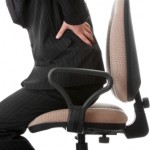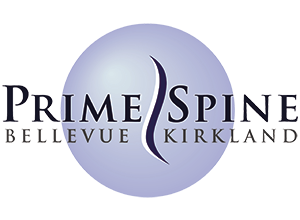What is Lower Crossed Syndrome and how does it cause low back pain?
 click the above image to redeem your free chiropractic exam
click the above image to redeem your free chiropractic exam
Lower crossed syndrome is a common postural distortion that many people deal with on a daily basis. This usually causes low back pain. This condition is caused by tight lower back muscles. The individual might also have sore knees due to tight leg adductor muscles (muscles that move your legs towards the center of your body.
Lower crossed syndrome is common in people who sit for extended periods of the day, leaning in a slightly flexed position. This causes the lower back muscles or erector spinae to continually contract to hold the body’s weight upright while the constantly flexed position shortens the muscle length of the iliopsoas and rectus femoris muscles (hip flexors). Over time these overused muscles adapt and shorten in length leading to muscle tightness. Low back pain, knee pain and ankle and hip pain are very common symptoms from this condition.
The body responded by abnormally lengthening other muscle groups. This phenomenon is known as reciprocal inhibition. This causes major low back pain and pelvic distortion which can cause knee pain, ankle pain, low back pain, inflexibility of the hamstrings and hyperlordosis of the lumbar spine.
Think of your quads (front thigh muscles) versus your hamstrings (back thigh muscles), if you flex one, you should feel the other stretch when you maximally contract. In the end, the shortened tight muscles cause the stretching and lengthening of their antagonist muscles. This ultimately leads to the weakening of those muscles.
Due to the tightened and lengthened muscles being imbalanced, a person suffering from lower crossed syndrome will typically present with anterior pelvic tilt that is causing low back pain and knee pain. The person will appear to be hunching forward with their pelvis. They might also have an increased lumbar lordotic curve, also known as an increased lower back arch, which contributes to the anterior pelvic tilt. Both of these conditions help to further enforce the lower crossed syndrome, resulting in one of the many reasons for lower back pain.
Muscles commonly tight or shortened in lower crossed syndrome include:
- Iliopsoas
- Rectus femoris
- Erector spinae
- Piriformis
- Tensor fascia latae (TFL)
- Leg adductors
The weakened or lengthened muscles include:
- Abdominal group
- Gluteal group
Treatment
1) Chiropractic adjustments to the hypomobile sacroiliac joint and lumbar spine.
2) Wobble chair for five minutes, two times per week.
(Done within PrimeSpine Clinic)
3) Remove any trigger points and adhesions with myofasial release and trigger point therapy. Foam rollers also work at home
http://www.youtube.com/watch?v=RoHBDim_fzk it band foam roller
http://www.youtube.com/watch?v=-cEaTbwrY5A hamstring foam roller
4) Stretch hamstrings with PNF
http://www.youtube.com/watch?v=gvOQK8qNi9E&feature=related hamstring pnf
5) Strengthen Abdominals and Gluteus Maximus
http://www.youtube.com/watch?v=ld1yQZRCn14 glute pnf
written by Dr. Benjamin Baker D.C., C.S.C.S.
www.primespines.com
425-825-8750
